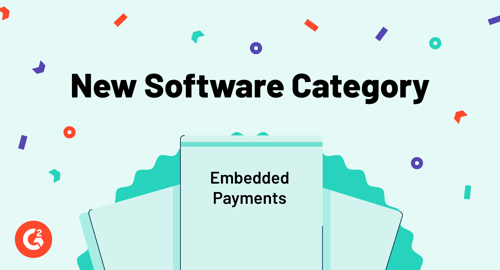While payments may seem straightforward from a buyer or consumer perspective, the back-end technology supporting payment processing can be complicated.
As more consumers and businesses buy goods and services online, the payment software market changes significantly. One of the recent advancements in this market is embedded payments, which allows merchants to accept payments within their solutions without using a separate payment processing platform.
How embedded payments work
The best examples of embedded payments are ride-sharing or food delivery apps.
You order, pay, track the order, and leave feedback in the same app, unlike websites where you get redirected to a payment platform like PayPal or Stripe. In both cases, you use a payment platform, except you don't even realize it in the former.
Companies must seamlessly integrate a payment solution into their app or software to make this happen. It's way more complicated than it seems, primarily for technical reasons but also because of concerns for privacy and security.
For this reason, onboarding is one of the main differentiators between typical payment processing and embedded payments. You can't just create an account and start using it. A company implementing embedded payments software needs to go through an onboarding process that identifies the specific needs of each business.
For instance, a software vendor will have different requirements than a ride-sharing app.
For software as a service (SaaS), the vendor must process recurring payments, usually for the same amount per payment and not frequently (usually monthly). By contrast, a ride-sharing company will have thousands of transactions every day, with different amounts varying significantly depending on the distance, time of day, or surge pricing.
Who needs embedded payments software?
While providing seamless payments to customers and consumers seems like a good idea, embedded payments may only sometimes be the best option to process payments.
For instance, an SMB software vendor that only has dozens of customers who pay for monthly subscriptions won't need this type of software to process hundreds of payments per year.
Embedded payment software is most beneficial to medium and large companies with a high number of transactions, which cannot be easily managed using traditional payment solutions. All other companies should use one or more of the payment software types described below.
Companies may use embedded payment software together with other payment solutions. While not ideal, the combination may be required in some cases.
For instance, a software vendor uses embedded payments to collect money from customers and payment processing to manage payments from and to their business partners (resellers, implementers, etc.).
Choose payment solutions carefully
Embedded payments are the most recent type of payment software, and we expect to see more niche solutions in the market, further complicating the selection process.
We'll continuously update our taxonomy to reflect new changes so buyers can compare all types of payment software and make educated decisions.
Learn how digital payments are shaping the global payment industry.
Edited by Jigmee Bhutia


 by Gabriel Gheorghiu
by Gabriel Gheorghiu
 by Gabriel Gheorghiu
by Gabriel Gheorghiu
 by Gabriel Gheorghiu
by Gabriel Gheorghiu